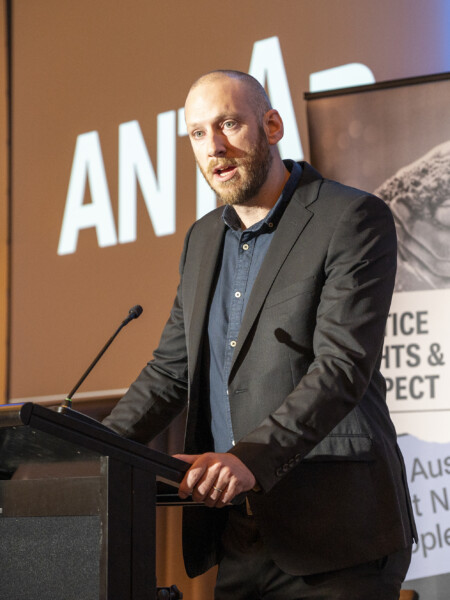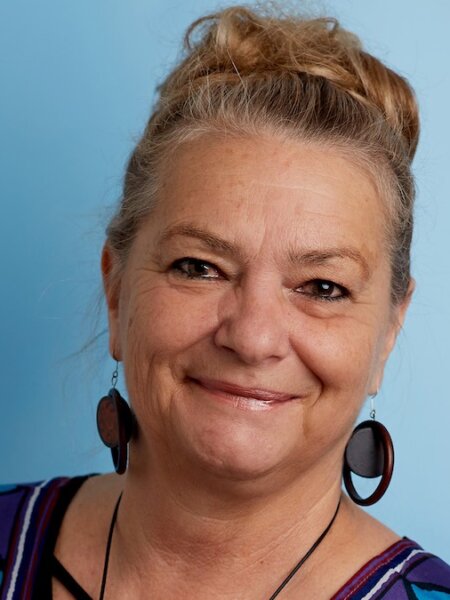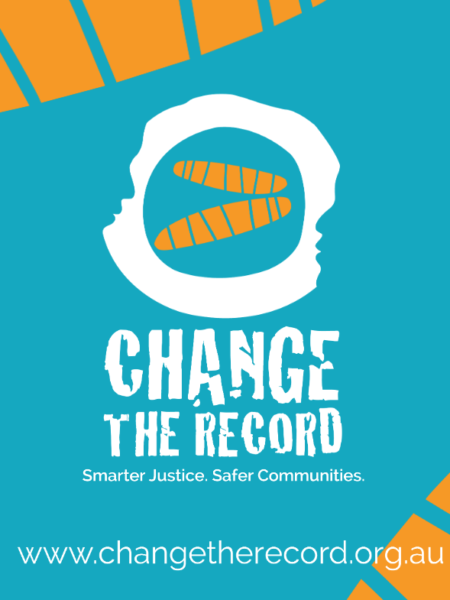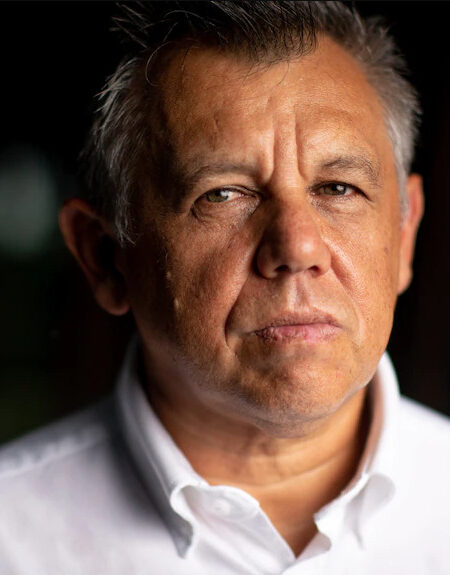I am encouraged that First Peoples and government are finally in the one forum where funding and policy can be aligned and jurisdictional and Indigenous responsibilities assigned and monitored – through the Partnership Agreement with the Coalition of Peak Aboriginal and Torres Strait Island Organisations and the Council of Australian Governments(COAG).
This is a historic development, but one which enables but does not necessarily, of itself, guarantee progress.
For actual progress to occur, there needs to be some fundamental shifts in policy and practice. I suggest the following 7 steps to turn around the efforts to close of the gap:
1. Target Setting
Firstly, target setting is not simply a process of setting out what results would be desirable but needs to take into account what actual services and resources would be required to achieve the targets – and how long it would take to both measure and achieve them. Targeting and budgeting must go hand in hand, and targeting without budgeting is simply a recipe for failure and disappointment.
2. Needs-Based Funding
Secondly, it is a cardinal principle behind government social policy that service provision should be related to need. For example, no one questions the fact that far more is spent on health care for the elderly than on the young who enjoy much better health.
However, while in broad terms the level of need for health care in Aboriginal and Torres Strait Islander people, based on the Burden of Disease studies is approximately 2.3 times higher than for the rest of the population, though the jurisdictions spend $2 approximately pc (87% of needs based requirements) on health for every $1 spent on the rest of the population, the Commonwealth only spends $1.21pc on Aboriginal and Torres Strait Islander people for every $1 spent on the rest of the population (barely half [53%] of the needs based requirements).
This is particularly important as the Commonwealth is largely responsible for the out-of-hospital services required to bring down preventable admissions and deaths. It is utopian and unrealistic to believe that gaps can be closed by spending relatively less on people with worse health.
This is not a plea for some kind of special deal for First Peoples but rather for a level of expenditure that anyone else of the population with equivalent need would receive. Funds are required to address market failure, particularly with the underuse of Commonwealth funding schemes (MBS/PBS) and to fill current service gaps with services that work and particularly, services designed by and for Aboriginal people (ACCHS). Similar principles apply to other areas of government policy and service provision eg housing, education, welfare etc.
3. Focus on Services
Thirdly, there seems to be a widespread belief that targets are somehow self-fulfilling, that all that is required is to set targets, measure them and that somehow or other the targets can be achieved.
This is of course nonsense, but indicative of the need for skills training in health planning and related fields (see below). Having set targets, it is absolutely necessary to consider what services are required to achieve the targets, what services are available and what services are missing, and the investment required to fill the service gaps. For services that are available, it is fundamentally important to have evaluation as a mandatory routine to see if the services are accessible, and effective – and if not, why not, and then take the necessary management decisions to improve service delivery (see management below).
4. Training
There is clear evidence across a range of fields (health, education, housing, justice etc) that significant progress is possible using methods that are tried and tested.
But Aboriginal health and related issues are not so simple that anyone can tackle them effectively. They are complex and require considerable skills and service delivery experience for effectiveness.
Throwing staff in at the deep end is inefficient, and not fair either to the staff or to Indigenous people. Health planning, for example, is a defined skill and requires specific training and a manifest lack of planning skills lies at the heart of suboptimal service delivery A fundamental understanding of culture is an absolute necessity as is a very solid grounding in service delivery experience. The need for training extends right across the board and applies to clinicians, health service administrators and public servants.
For each individual the question needs to be asked – what training does this person require in order to fulfil their role with maximum effectiveness? It is time for amateur hour to come to an end and for the development and implementation of a National Training Planto ensure all involved are adequately equipped for their individual roles – and it will not be possible to adequately realise on the investments involved in Indigenous service provision without appropriate staff training.
5. Management
For many, the concept of management is little better than sitting around and hoping that somehow, miraculously, next year’s results will be better. That is not how Gaps are Closed.
A formal, integrated, multilayered management system is required – supported by appropriate information and evaluation systems.
At the service delivery level there needs to be formal review processes, at least mid-year and annually, to consider both process and outcome measures in relation to the specified targets – with a timeframe that is based on trajectories which set out what results can and should be expected at different points of time.These measures need to be replicated at regional and jurisdictional levels in the context of a wider consideration of staffing, training and resourcing issues. At the national level the focus needs to be on both resourcing and policy issues. At every level, the question needs to be how well are we doing, and what needs to be done to achieve better results – and then to take the appropriate management decisions required to achieve the targets.
6. Continuous Quality Improvement
There is incontrovertible evidence that sizeable and rapid gains are possible in both chronic disease and in the health of mothers and babies. But those gains require high quality services and are not achieved without proper systems for measuring, monitoring and improving the quality of services.
Such approaches are standard throughout industry and need to be a formal component of health service delivery and other areas of social policy. CQI processes have been used for some services but need to be mandated and funded as a national requirement so that everyone involved in Indigenous service provision lives and breathes service quality enhancement and participates in the formal processes involved.
7. Learning from national and international experience
There are many fine examples of Indigenous Health service delivery – and some of the best health services in the country are provided by the Aboriginal Community Controlled Health Services.
The Institute of Urban Indigenous Health in South-East QLD (IUIH) is an outstanding example of how to integrate Primary Health Care services, both Indigenous and mainstream, under Aboriginal and Torres Strait Islander leadership. in achieving the desired results in term of Closing the Gap.
It is just one of a number of examples around the country, but such examples need to become systematic, comprehensive and national throughout Australia. There are similar examples of services for mothers and babies which reduce low birth weight rates and lower perinatal mortality. In the important field of chronic disease, it has been demonstrated that systematic application of current knowledge can achieve dramatic reductions in mortality in short time periods. We know what to do, have shown that impressive results can be achieved but nationally, progress in both child health and chronic disease falls a long way short of what is required. There needs to be formal support programs, to replicate successful models of these services, adapted as needed to meet local needs, right throughout Australia.
Similarly, successful programs like Housing for Health, developed for the Commonwealth (and subsequently dropped [!] but picked up by the NSW government) have improved housing and consequently health, and doing so by training and employing local Aboriginal people. It beggars belief that programs of such obvious worth are not universally delivered across Australia, and that needs to be rectified as a matter of urgency.
In other fields, child development and justice reinvestment programs have been shown to be effective and cost effective, both in Australia and overseas, but implemented on a piecemeal and patchy basis in Australia. That cannot continue.
Government budgets tend to focus on outlays rather than investment – and more importantly, return on investment. This is inefficient and, in the end, wasteful. The recent NZ Wellbeing budget shows a different approach and needs careful consideration.
Conclusion
None of the measures above are radical or untested or impossible to implement. Indeed, they are standard throughout much of the world. Not implementing them has proved costly in terms of poor results and suboptimal returns on investment.
The time for amateurism is over and Australia needs to lift its game. and these standard measures, under First Peoples leadership, and in the context of the COAG partnership, we can make a significant contribution to the achievement of Australia’s national Goals to Close the Gap. The Gaps can and should be closed – but not by fine words and good intentions. Much progress is possible in relatively short periods of time and Australia could and should be the world leader in Indigenous affairs.




